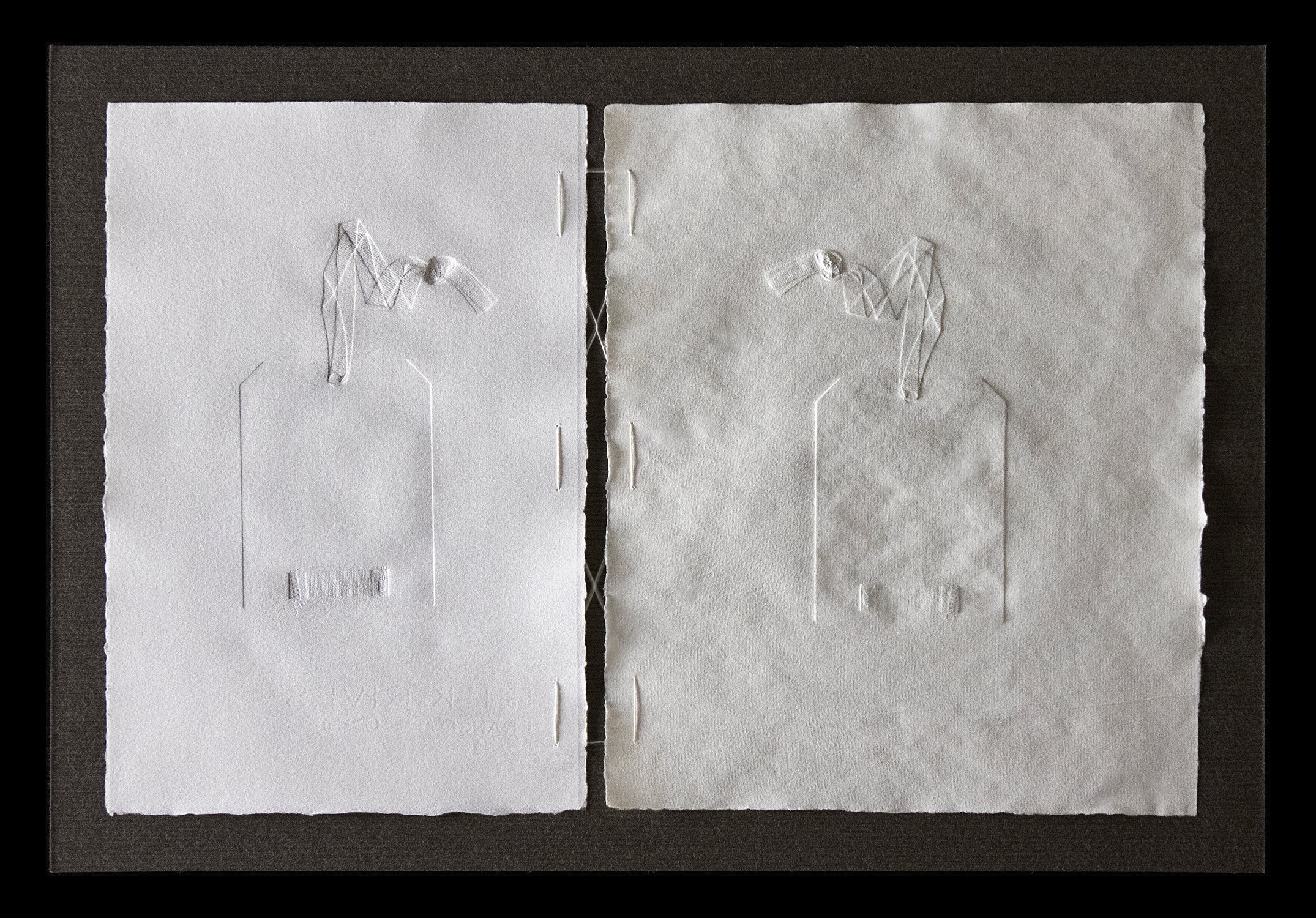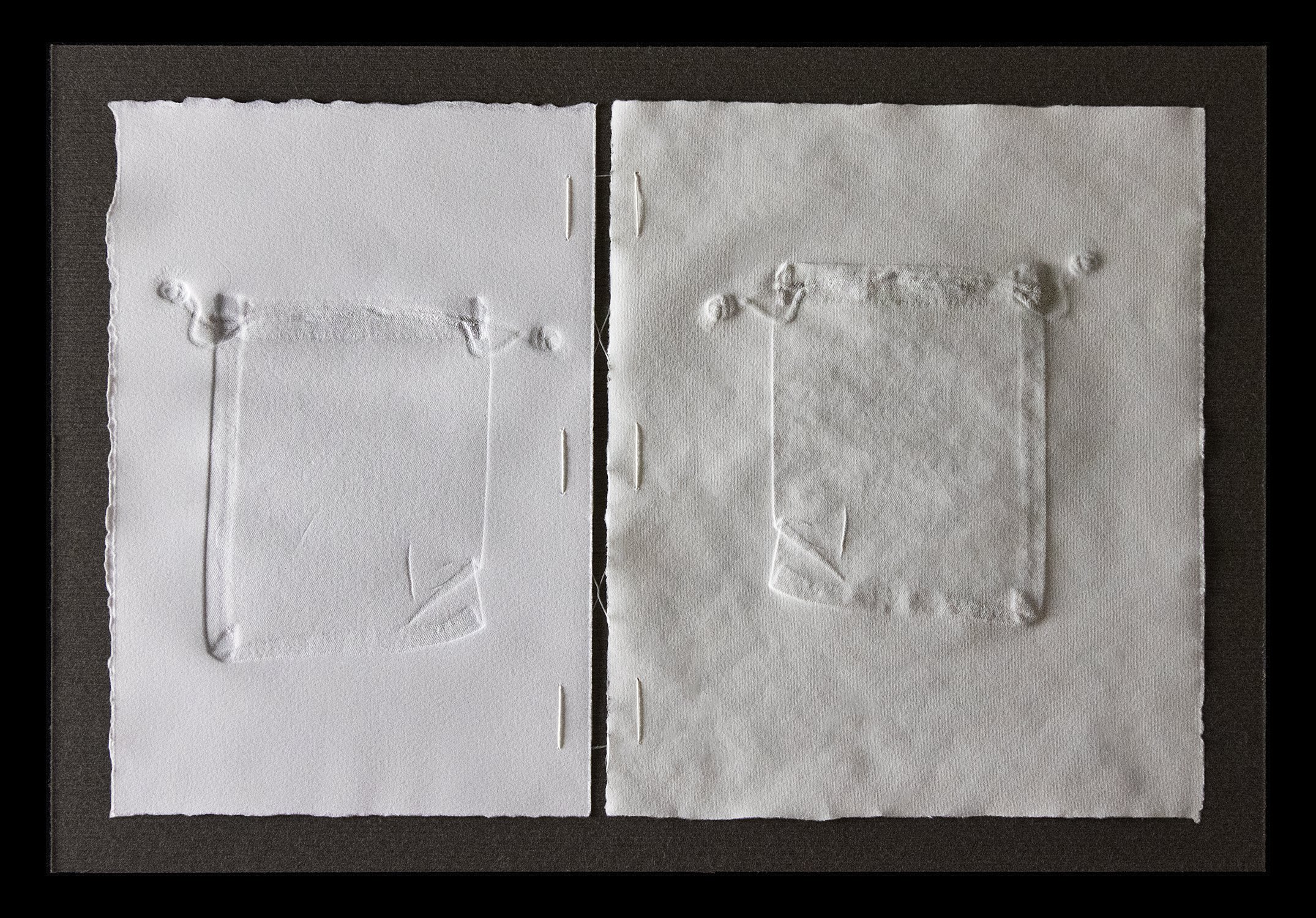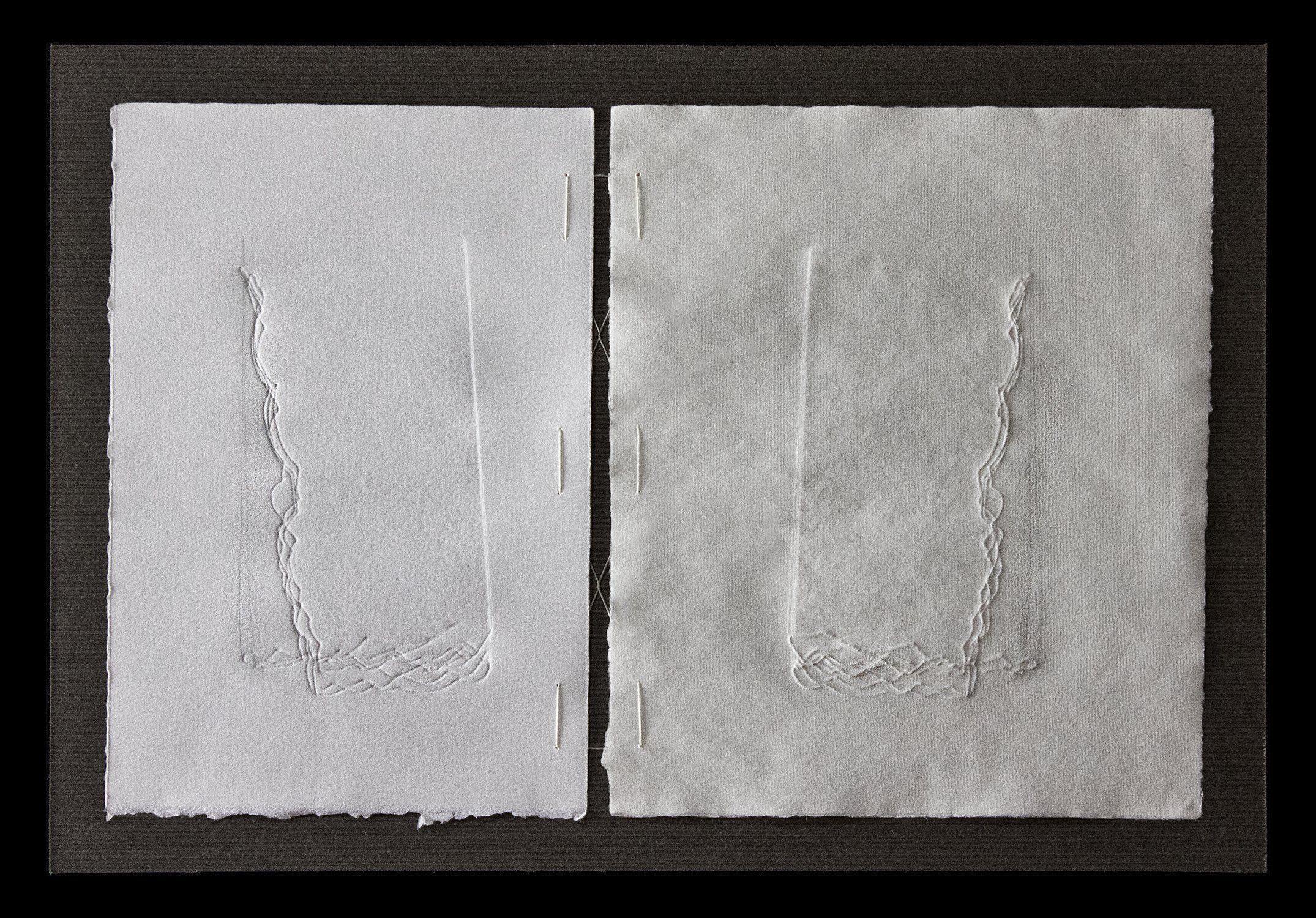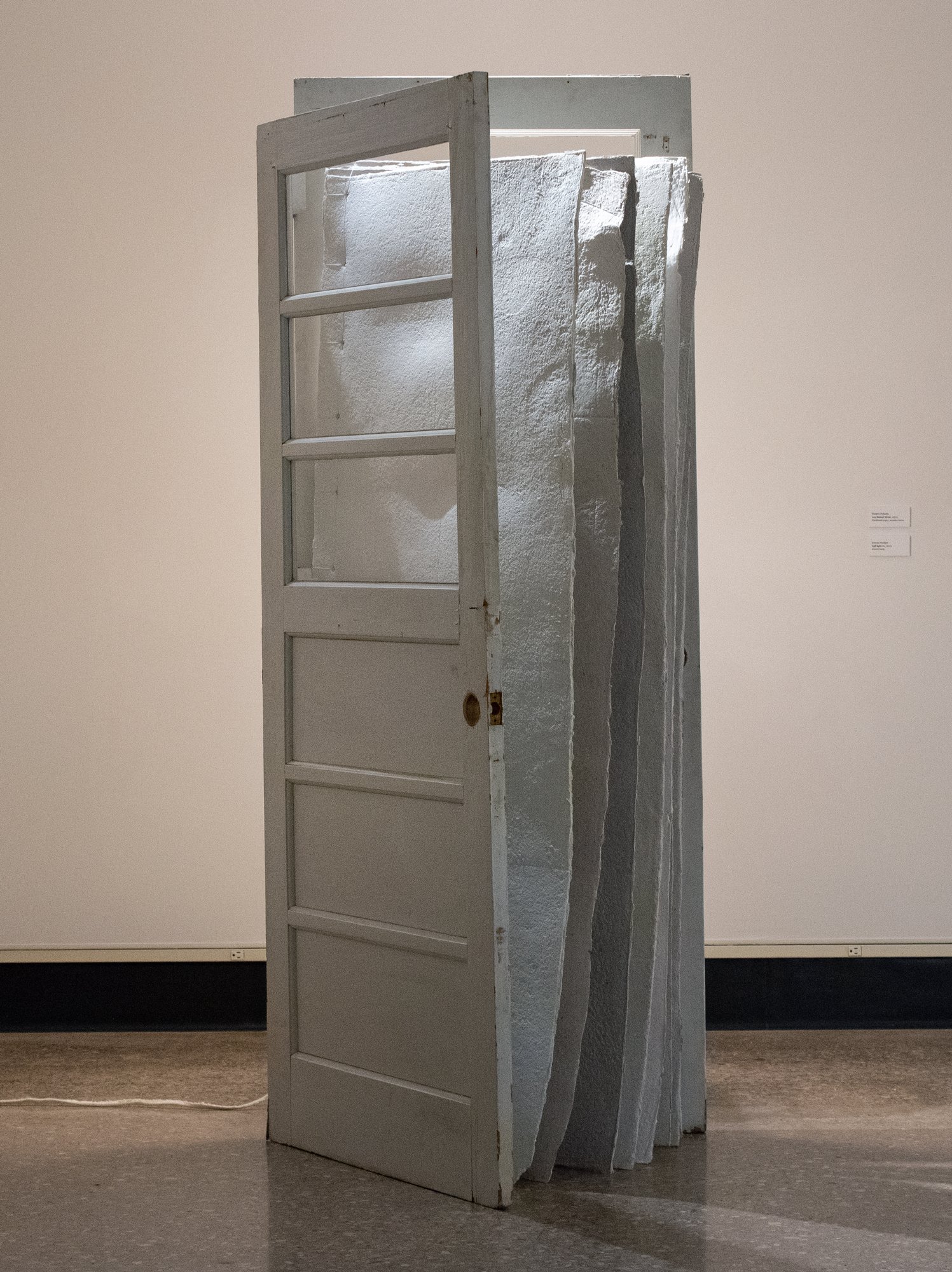An archivist is someone who collects, preserves, and organizes items determined to have value. I use paper to archive the lives of everyday objects and the experiences I have with them.
Working with found materials leads me to seek out lost objects. Many of these discarded items are paper: childhood drawings, last week’s grocery list, the torn-out pages of a thrifted journal. By grinding them to pulp and pressing them into fresh sheets of paper, I give these materials a new purpose. The papermaking process transforms the original objects while preserving my relationship with them.
I use bound and unbound book forms to organize my work. Closed books hold pages of memories pressed together. Printmaking is another form of bookmaking. Each print is mirrored with its plate: two halves with unbound pages. Cataloged and ordered, a series of prints builds a library. The pages in my books are uniform, simple, devoid of words, but never empty. Each book is a compendium of memories, a tangible record of the mementos they contain. They are my archives—an ongoing history of finding, making, discovering, loving. In this way, making a book is like making a door. Either will lead somewhere if you open it.
Compendium was collaboratively installed alongside Emma Folsom’s senior thesis exhibition, within reach. The two bodies of work are completely separate, but intended to be in communication with each other.
























